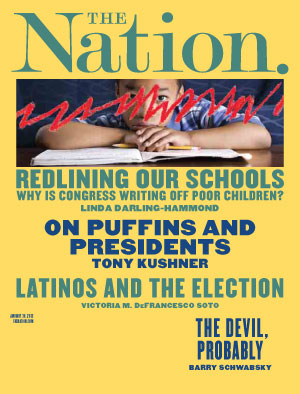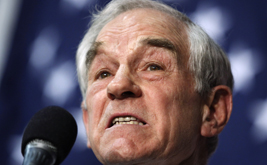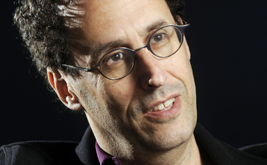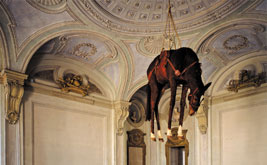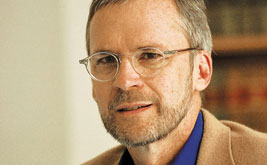Never in the modern history of the Republican Party has a field of GOP presidential candidates been so united and so aggressive in opposing collective bargaining rights for workers. More than a century and a half has passed since a young Republican Party positioned itself as a tribune of the working class; but until recent years, savvy Republicans continued to compete with Democrats for labor endorsements and the votes of union members in industrial states like Ohio and Pennsylvania. Even Ronald Reagan—who justifiably earned the enmity of labor with his summary firing of air traffic controllers in 1981—made a big deal about his Teamsters endorsement in 1984. Even if his actions did not match his rhetoric, Reagan showed up at union conventions during his presidency, telling a 1981 carpenters union convention that he respected “the sacred right of American workers to negotiate their wages,” adding that “collective bargaining…has played a major role in America’s economic miracle. Unions represent some of the freest institutions in this land. There are few finer examples of participatory democracy to be found anywhere.” And Reagan wasn’t the last Republican to try to connect with labor. As recently as 2007, former Arkansas Governor Mike Huckabee appeared at the International Association of Machinists convention and received its endorsement in that year’s GOP primaries.
Today, however, the party’s contenders are not just refusing union invitations. They are making unionbashing central to their campaigns. Antiunion zealotry has become a core premise of the GOP, and it extends far beyond the presidential race. Attacks on the collective bargaining rights of public employee unions by Wisconsin Governor Scott Walker and Ohio Governor John Kasich may have gotten the most publicity last year (and the most pushback, with Ohio voters overturning Kasich’s anti-labor law in November and Wisconsinites mounting mass rallies and a drive to remove Walker from office). But other Republican governors, notably Indiana’s Mitch Daniels, are striving to undermine the collective bargaining rights of private-sector workers by promoting “right to work” laws, and the National Labor Relations Board (NLRB) has emerged as a favored target of Congressional Republicans.
Fierce disdain for labor rights has become a focus of the 2012 campaign, as GOP candidates have been stumbling over one another in a rush to announce their determination to assure that there is no power in a union. In the final debate before the New Hampshire primary, the eventual winner of the race, Mitt Romney, said that passing laws making it harder for unions to organize workers and bargain on their behalf “makes a lot of sense.” Texas Governor Rick Perry argued that erecting structural barriers to union organizing is the way to make a state a powerful “magnet” for job creation.
The comments from Romney and Perry were extensions of their previous interventions on behalf of New Hampshire GOP House Speaker William O’Brien’s promotion of a stack of anti-labor legislation, which reflects the agenda of the corporate-funded “bill mill” of the American Legislative Exchange Council [see “ALEC Exposed,” August 1/8, 2011]. O’Brien spent much of last year trying to enact the first right-to-work law in a New England state. He secured passage of the measure, which would have legally barred unions from collecting mandatory dues from workers and otherwise weakened labor at the bargaining table and in the public sphere. But Democratic Governor John Lynch vetoed the bill, and an effort to override the veto failed when more than forty GOP members of the State House sided with Democrats to block the assault on collective bargaining rights.
New Hampshire’s legislative vote as well as polling suggest that there are a good many Republicans who agree with independents and Democrats that unions are useful—but the GOP presidential contenders showed no interest in appealing to them. Newt Gingrich, who gained O’Brien’s endorsement, was an enthusiastic proponent of drives to pass right-to-work laws in Northern states, arguing that they are part of a smart economic-development strategy for states competing with one another (and with countries like China) in what economists recognize as a race to the bottom. Even the supposed “moderate,” former Utah Governor Jon Huntsman, urged New Hampshire legislators to gain a “competitive advantage over your neighbors” by passing antiunion laws. And “maverick” Ron Paul has been distributing literature in Iowa, New Hampshire and South Carolina that attacks “compulsory unionism” and “big labor.”
But the Republican candidates don’t stop there. Gingrich said, “One of the things the Congress should do immediately is defund the National Labor Relations Board.” Not to be outdone, Romney began airing an ad in South Carolina that declares, “The National Labor Relations Board [is] now stacked with union stooges selected by the president.” Rick Santorum, who has tried to present himself as an ally of working Americans with talk of renewing our manufacturing base, is as militant as Wisconsin’s Walker when it comes to attacking the collective bargaining rights of public employees. “I do not believe that state, federal or local workers…should be involved in unions,” griped Santorum. “I would actually support a bill that says that we should not have public employee unions for the purposes of wages and benefits to be negotiated.”
Why is unionbashing so central to today’s Republican Party? One reason is that much of the ideological vetting of GOP candidates is done by radio and television personalities like Rush Limbaugh, Sean Hannity and Glenn Beck, who have long painted unions as threats to prosperity. And the candidates also face pressure—even at times threats—from big-spending “independent” groups like the Club for Growth, which are fiercely opposed to labor on issues like trade policy. ALEC and the Tea Party–linked Americans for Prosperity, both funded by the antiunion Koch brothers, add to the pressure, especially at the state level.
What’s ironic, of course, is that as the candidates condemn unions, their assaults on one another highlight the need for organized labor and laws protecting the rights of workers. While Romney was airing his NLRB-bashing ads in South Carolina, a Super PAC funded by billionaire gambling magnate Sheldon Adelson and linked to Gingrich launched a $3.4 million ad campaign attacking Romney as a “predatory corporate raider” of small businesses who shuttered factories, eliminated jobs and destroyed the dreams “of thousands of Americans and their families.” The former House Speaker is complaining that his rival’s firm, Bain Capital, “apparently looted the companies, left people unemployed and walked off with millions of dollars” and railing against “rich people figuring out clever legal ways to loot a company.” Aside from the irony of framing ads that could be run by Democrats if Romney turns out to be the Republican nominee, Gingrich was also making a powerful, if unintentional, argument for why federal and state governments should preserve the rights of workers to organize strong unions, to collectively bargain and to make their voices heard at the workplace and at election time.
Abraham Lincoln once urged his fellow partisans to recognize that “labor is the superior of capital, and deserves much the higher consideration.” Unfortunately, as the events of 2011 and the campaign of 2012 amply illustrate, the Republicans are no longer the Party of Lincoln. Read More
John Nichols
